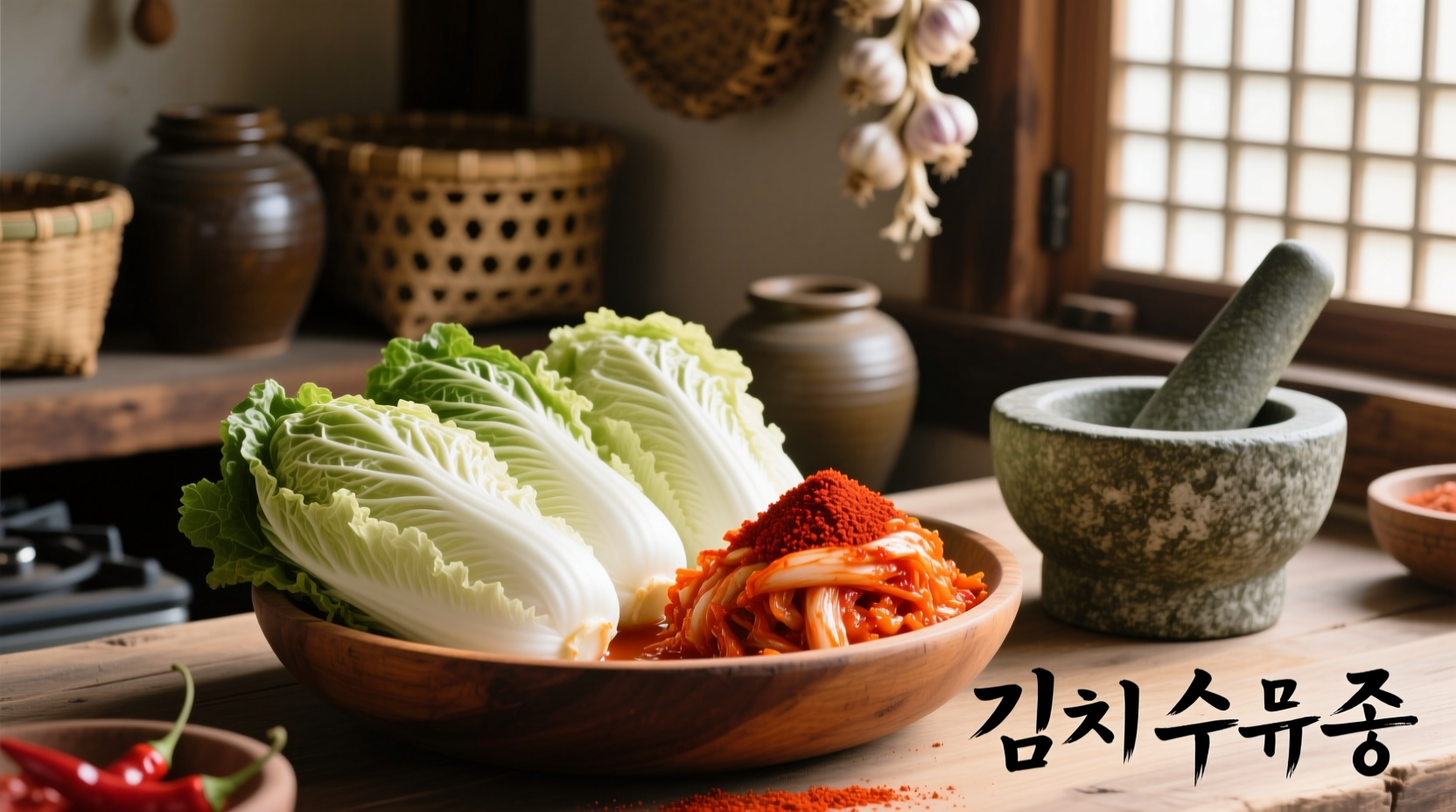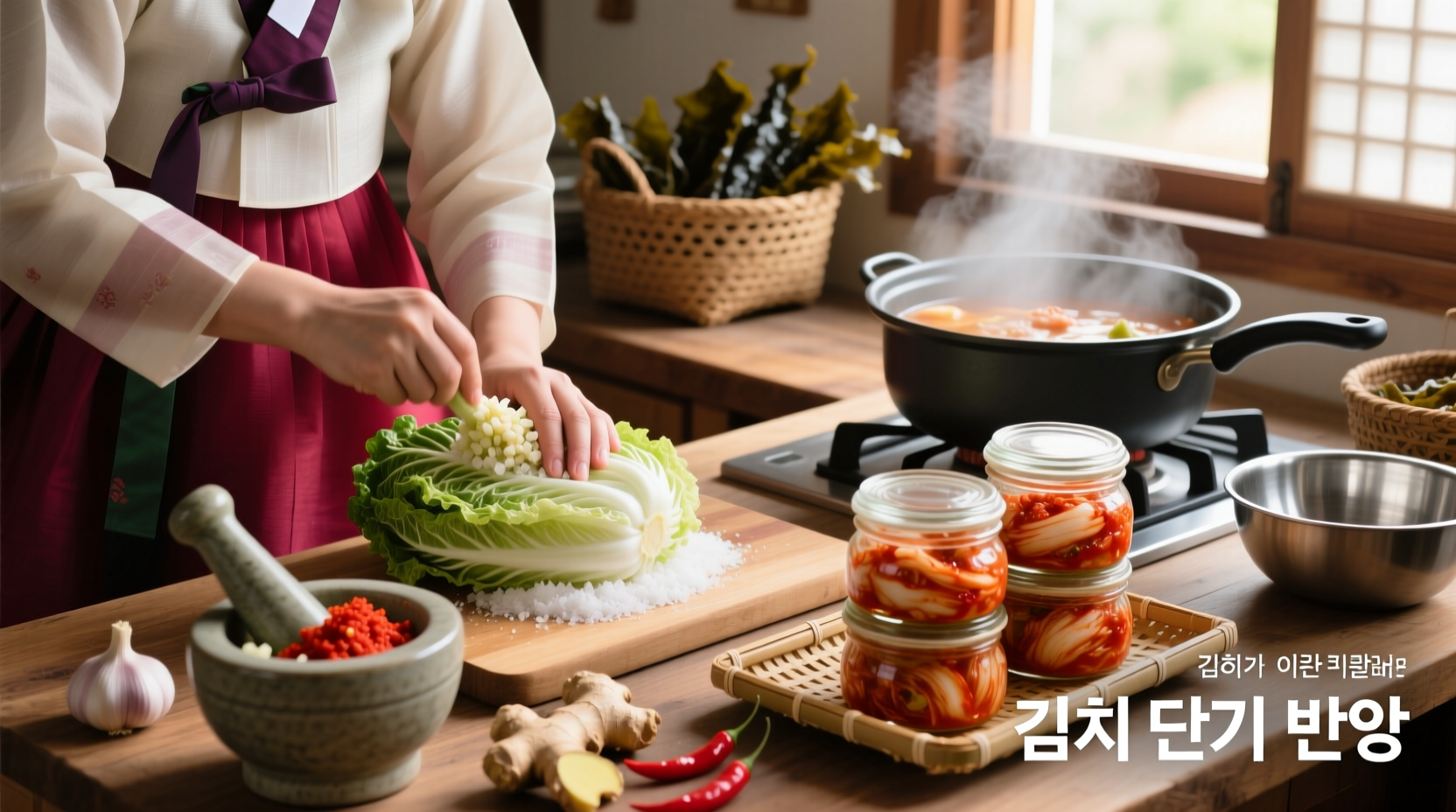Authentic kimchi requires napa cabbage, Korean red pepper flakes (gochugaru), garlic, ginger, fish sauce or salted shrimp, and proper fermentation time. The essential process involves salting cabbage, preparing a spicy paste, combining ingredients, and fermenting at room temperature for 1-2 days before refrigerating for slow maturation.
Creating authentic kimchi at home transforms simple ingredients into a probiotic-rich Korean staple that elevates any meal. This traditional fermented side dish offers complex flavors that develop over time, providing both culinary versatility and digestive health benefits. Within 20 minutes of preparation, you'll begin the fermentation process that yields tangy, spicy results within days.
The Cultural Significance of Kimchi Making
Kimchi represents more than just food in Korean culture—it's a culinary tradition recognized by UNESCO as an Intangible Cultural Heritage of Humanity. The annual kimjang ritual, where communities gather to prepare winter kimchi supplies, demonstrates how deeply this practice is woven into Korean social fabric. Modern home cooks can honor this tradition while adapting techniques to contemporary kitchens.
| Kimchi Type | Primary Vegetable | Fermentation Time | Flavor Profile |
|---|---|---|---|
| Baechu Kimchi | Napa cabbage | 3-4 weeks | Spicy, tangy, complex |
| Kkakdugi | Radish cubes | 1-2 weeks | Crisp, slightly sweet |
| Pa Kimchi | Green onions | 1 week | Mild, onion-forward |
Gathering Authentic Ingredients
Quality ingredients determine your kimchi's success. Korean red pepper flakes (gochugaru) provide distinctive flavor without overwhelming heat—substituting regular chili powder creates inferior results. The Korean Food Promotion Institute confirms that authentic gochugaru contains naturally occurring yeast strains essential for proper fermentation (koreanfood.or.kr).
For vegetarian versions, replace fish sauce with fermented kelp broth. Traditional recipes use salted shrimp (saeujeot) which adds umami depth, but many modern adaptations omit this ingredient without sacrificing quality. Always use non-iodized salt like kosher or sea salt, as iodine inhibits fermentation.

Step-by-Step Kimchi Preparation
Cabbage preparation: Cut one medium napa cabbage lengthwise into quarters, then crosswise into 2-inch pieces. Dissolve 1/2 cup coarse sea salt in 8 cups water, submerging cabbage for 2-3 hours while occasionally turning. Rinse thoroughly and drain in a colander for 30 minutes.
Spice paste creation: Combine 1/4 cup gochugaru, 3 minced garlic cloves, 1 tablespoon grated ginger, 2 tablespoons fish sauce, 1 tablespoon sugar, and 1/4 cup water. Add 1 thinly sliced Asian pear or apple for natural sweetness and enzyme activity that enhances fermentation.
Combining ingredients: Massage paste into drained cabbage until evenly coated. Pack mixture tightly into clean glass jars, leaving 2 inches of headspace. Press down to eliminate air pockets and ensure brine covers vegetables.
Fermentation Science and Timing
Successful kimchi fermentation follows predictable stages. During the first 1-2 days at room temperature (60-70°F), lactic acid bacteria multiply rapidly, producing carbon dioxide bubbles visible in the jar. The USDA Center for Food Safety confirms that proper salting creates conditions where beneficial bacteria outcompete pathogens (fsis.usda.gov/fermentation).
After initial fermentation, refrigerate kimchi to slow the process. Flavor complexity develops over 2-4 weeks as sugars convert to lactic acid. Many home fermenters make the mistake of discarding early batches—remember that optimal flavor emerges after several weeks of cold fermentation.
Troubleshooting Common Kimchi Issues
Too salty kimchi: Rinse briefly in cold water before eating, or add thinly sliced Korean radish (mu) to absorb excess salt during fermentation.
Soft or mushy texture: This typically indicates insufficient salting or excessive fermentation temperature. Future batches should use proper salt ratios (2-3% of vegetable weight) and maintain cooler temperatures during initial fermentation.
Mold development: Surface mold occasionally appears but is generally harmless if addressed quickly. Remove affected portion plus one inch below, ensuring remaining kimchi stays submerged in brine. Persistent mold indicates contamination—discard the batch and sterilize equipment before retrying.
Creative Culinary Applications
Don't limit kimchi to a side dish—incorporate it into modern recipes. Add aged kimchi (3+ weeks) to fried rice for complex umami notes, or blend young kimchi into salad dressings for tangy brightness. Korean chefs increasingly use kimchi brine as a marinade for proteins, where the acidity tenderizes while adding distinctive flavor.
For beginners, start with small batches (2-3 cups) to experiment with fermentation timing. As your palate develops, you'll recognize subtle differences between 1-week and 4-week kimchi, allowing you to harvest at your preferred flavor stage.
Frequently Asked Questions
How long does homemade kimchi last in the refrigerator?
Properly fermented kimchi lasts 3-6 months in the refrigerator. Flavor continues developing over time, becoming more sour as fermentation progresses. Always use clean utensils when serving to prevent contamination.
Can I make kimchi without fish sauce or shrimp?
Yes, authentic vegetarian kimchi substitutes fish sauce with fermented kelp broth or additional salt. Many traditional recipes from Buddhist temple cuisine omit animal products entirely while maintaining complex flavor through additional garlic, ginger, and fermented soybean paste.
Why isn't my kimchi bubbling during fermentation?
Lack of bubbling may indicate insufficient salt, low ambient temperature, or inadequate mixing of the spice paste. Ensure your fermentation environment stays between 60-70°F (15-21°C) and that vegetables remain submerged in brine. Some batches show minimal visible activity while still fermenting properly.











 浙公网安备
33010002000092号
浙公网安备
33010002000092号 浙B2-20120091-4
浙B2-20120091-4